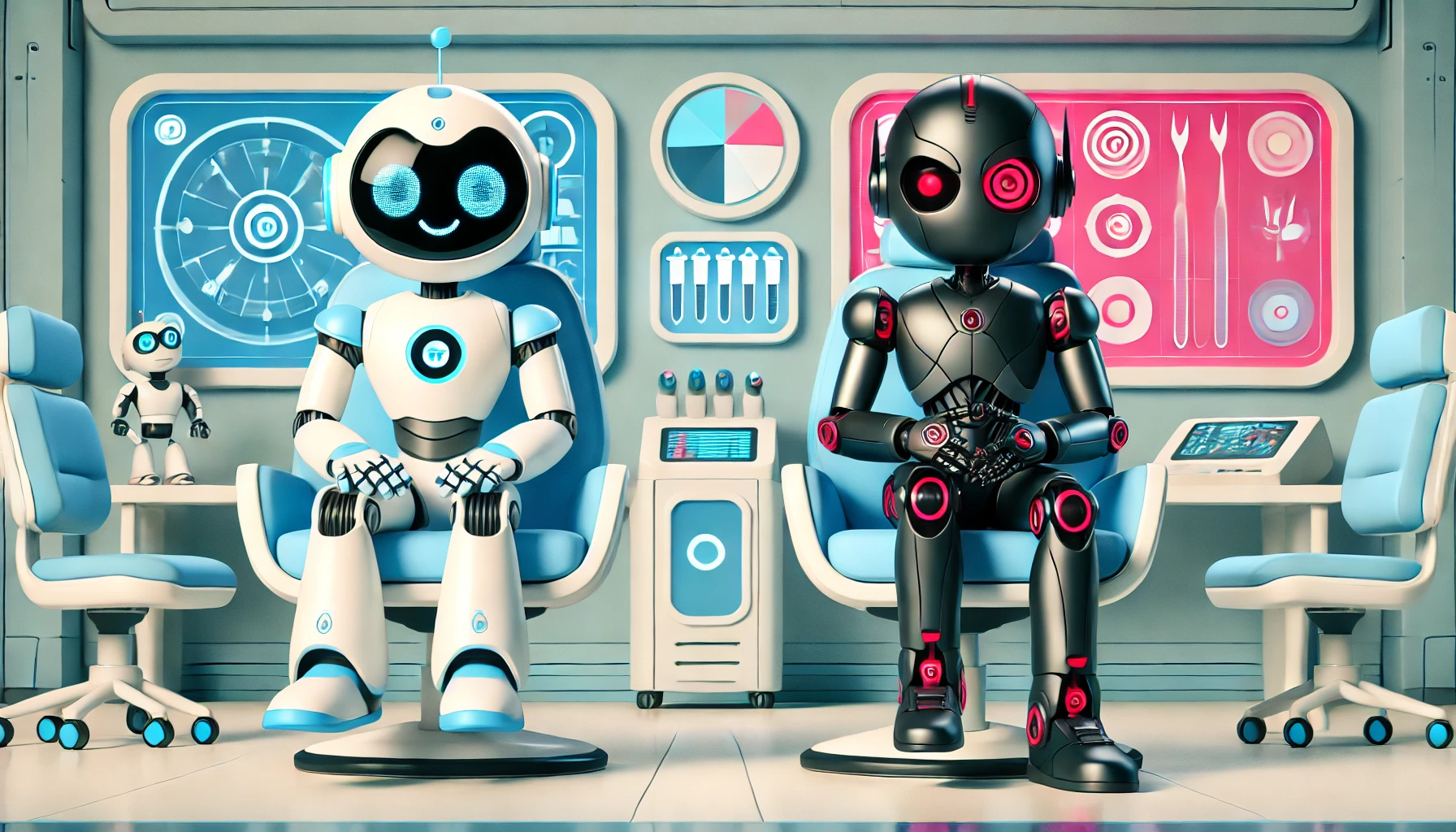
Image generated with DALL·E through ChatGPT
Opinion: Are Humanoid Robots Our Friends or Foes? The Current Impact, Challenges, and Developments
As a young girl in the 90s, I remember watching The Jetsons on TV and seeing that futuristic world-like universe as an impossible scenario. However, as time goes by, that old cartoon produced by Hanna-Barbera in 1962 becomes more realistic and valuable than any of us could have imagined.
The Jetsons predicted video calls long before Zoom and Facetime existed, large flatscreens when televisions were bulky and heavy and were no larger than 20 inches, and the house assistant, the famous Rosie, became many people’s far away dream until now.
Just a few days ago, Beijing hosted one of the most important events in robotics, the World Robot Conference 2024 where 27 humanoid robots were featured. We will soon look back at the popular disc-shaped vacuum robots like we look back on the short-lived LaserDisc. In just a couple years, we could have a humanoid to just use our regular vacuum.
Tesla featured its Optimus robot, a powerful humanoid machine that can fold clothes pretty well. Other popular demonstrations in the event showcase these robots’ fine motor skills through cooking or serving drinks, for example. These are not the only capabilities, many of these robots are already working. BMW is using OpenAI’s Figure 02 models to assemble parts in one of its plants, and Tesla is already working on producing more Optimus models to work in its own factories and others’.
Impressive. But, multiple questions pop into my mind when considering current and future developments. Will these products be accessible for anyone just like The Jetsons got to rent a low-cost robot maid? Will they take on our jobs? Will they be as obedient and nice as Rosie? Other concerns might not be on that show. Can open-source models democratize this technology? How is society navigating the rapidly evolving world of robotics?
Humanoid Robots Are Developing Faster in 2024
Chatbots powered by large language models and artificial intelligence are already performing tasks and replacing people in many roles at companies like Ikea or Klarna who publicly recognized using chatbots to replace workers in customer service.
However, compared to chatbots in computer software, it still feels distant—and different—to really see these human-like structures performing in our workspaces. And, in the places they are, as we have seen in the videos, they can’t move as fast as we do, and they don’t look that real or threatening—yet.
While many have criticized how funny the way these humanoid robots move, we should acknowledge at least two things now: first, it is quite impressive that they can even stand on both feet and move, and second, they are getting smarter.
Thanks to the recent developments in artificial intelligence, researchers have been able to transfer more advanced algorithms to their robots, and they are cleverer than ever.
This year, Google DeepMind unlocked a new level in robotics. They built a ping-pong robot—a milestone researchers had been trying to reach since 1980—that could play with intermediate amateur skills. Groundbreaking. They also mentioned that this robot could learn from its mistakes and improve its performance.
The slow pace that we still see in these human-like machines is quickly improving. That ping-pong robot and companies like Boston Dynamics have demonstrated that these machines are starting to move faster. Atlas, Boston Dynamics’ fascinating humanoid robot can do back flips, and the new model can do push-ups better than me for sure.
Maybe in a few years, we will see them in our offices writing the most boring reports and presentations, in the streets taking care of our garbage, or at home keeping our places tidy and preparing our favorite meals. In the best-case scenario, of course.
Are Humanoid Robots Good?
All of us who have seen even just a few sci-fi movies fear the same things: this human-like machine taking control of us or being used as weapons. What if they replace us in more than just a job position? Is humanity at risk? Can we create laws to prevent this? Maybe the new California bill on AI safety is one step closer to providing a good regulation framework. Maybe not.
“AI is like a kitchen knife, which can be used for good things, like cutting an onion, and bad things, like stabbing a person,” said the AI researcher Sebastian Thrun as an argument to explain why the new bill shouldn’t focus on businesses rather than people. “We shouldn’t try to put an off-switch on a kitchen knife. We should try to prevent people from misusing it.”
Seeing these robots do the laundry and playing ping-pong makes us find them appealing and Rosie-like friendly. But how much do we really know about what’s happening behind the scenes? Let’s just consider this for a moment: the same department that built the ping-pong robot has multiple employees concerned about military contracts. Only those inside those large companies restricted by NDAs could tell.
Will Humanoids Only Serve the Rich?
Humanoid robots are very expensive, and the high prices are the main challenges of this technology. According to the investment and banking company Goldman Sachs, the manufacturing cost to produce a humanoid robot currently ranges between $30,000 and $150,000, and that is an improvement as it was more expensive in previous years.
Elon Musk is working on an “affordable” Optimus that could cost less than $20,000 in the near future. And other companies like Wisson Technology have already figured out ways to reduce the costs of their flexible arms for humanoid robots this year.
The main difference in accessibility to this technology right now is pretty obvious: not everyone can afford it. Only big tech companies and successful startups seem to have the investors and resources to create or buy the technology to build and use these robots.
So, aren’t powerful companies just getting more powerful? That’s when freeing the code source to make it available for everyone becomes a fragile but important strategy to seek that balance.
There’s a dim light at the end of the tunnel as there are companies working on making this technology more accessible. Hugging Face’s new open-source robotics project, LeRobot, aims to make robotics accessible to anyone: allowing people from all over the world to build their own AI-powered two-arm robots at home for around $300. It might not be a whole humanoid robot, but with the right tools and pieces and following the company’s tutorials on YouTube, anyone could build one—at least a part of it—at home.
So Can We Trust Them?
Humanoid robots are getting faster and smarter in 2024, but, for now, they aren’t replacing humans, at least not as chatbots already are. However, it’s hard to predict how it will evolve in the next few years as we don’t have access to the technology.
While Boston Dynamics, Tesla, and other humanoid robot builders have promised to build machines “capable of performing tasks that are unsafe, repetitive or boring”—Tesla’s Optimus bio description on X—and to reduce risks in certain tasks at home and on-the-job, there might be more actions needed and the new AI safety bill might not be enough.
What if, like Thrun said, more regulations towards people—and companies, as I don’t think regulations for these powerful companies should be ignored either—are required? Perhaps the right question is not whether humanoid robots are friends or foes, but rather whether humanoid robot builders are friends or foes.

 Previous Story
Previous Story

 Latest articles
Latest articles 

Leave a Comment
Cancel